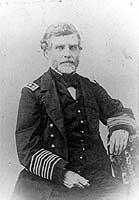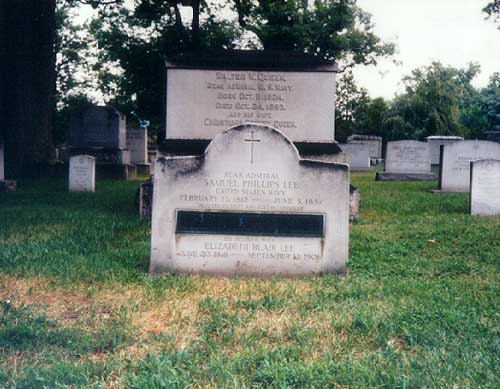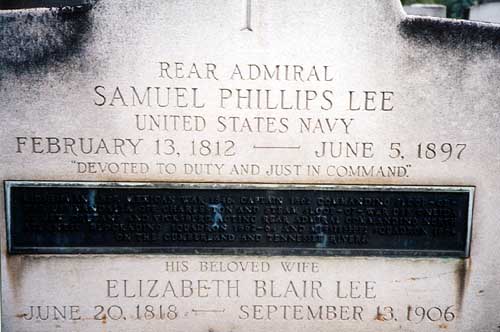Born in Fairfax County, Virginia, February 13, 1812, the grandson of Senator Richard Henry Lee, he entered the United States Naval Academy as a Midshipman in November 1825 and then served on the USS Hornet in the West Indies, the USS Delaware and USS Java in the Mediterranean between 1827 and 1830, and on the USS Brandywine and USS Vincennes in the Pacific.
Promoted to Lieutenant in February 1837. During the Mexican War, he commanded the Survey Brig, Washington, D.C. and took part in the capture of Tabasco by Commodore Matthew C. Perry on June 15, 1847. In 1851 he undertook an extensive sounding cruise in the Atlantic on the USS Dolphin.
He was promoted to Commander in Septemebr 1855 and took command of the USS Vandalia in 1860 and was at the Cape of Good Hope when he learned of the outbreak of the Civil War. He returned immediately to home waters and was assigned to blockade duty at Charleston, South Carolina.
In 1862, he was transferred to the West Gulf Blockading Squadron, and in April commanded the Corvette USS Oneida in the attacks under Flag Officr David G. Farragut on Fort Jackson and Fort St. Philip and the capture of New Orleans. In a fight with the Confederate River Fleet the Oneida saved a sister ship, USS Varuna, and captured the Confederate steamer Governor Moore. He later commanded the Oneida in running past Vicksburg batteries.
He was promoted to Captain in July 1862, appointed an acting Rear Admiral in September and sent to succeed Admiral Louis M. Goldsborough in command of the North Atlantic Blockading Squadron. In addition to blockade work, in which more than 50 blockade runners were captured or destroyed, his squadron supported a great many Army operations on shore, including General Benjamin Butler’s army at Bermuda Hundres and movements on the James River.
In October 1864, he was succeeded by Admiral David Dixon Porter and placed in command of the Mississippi Squadron, which provided valuable support on the Cumberland and Tennessee rivers to General George H. Thomas in his campaigns against General John B. Hood.
He was also responsible for maintaining the isolation of the Confederate forces west of the Mississippi River. He was Chief of the Signal Corps after the war, was promoted to Commodore in July 1866, and served as President of the Board of Examination.
He was promoted to Rear Admiral in April 1870, commanding the North Atlantic Squadron from then until 1872. He retired in February 1873. He died at Silver Spring, Maryland, June 5, 1897 and was buried in Section 1 of Arlington National Cemetery.
His wife, Elizabeth Blair Lee (June 20, 1818-September 13, 1906) is buried with him.
Elizabeth Blair Lee
Wife of Samuel Phillips Lee. Married: Apr 27, 1843. Jun 20, 1818-Sep 13, 1906. When Elizabeth Blair, a member of one of America’s most prominent political families, married naval officer Samuel Phillips Lee in 1843, she anticipated long separations his career would necessitate and promised to write to him every day they were apart.
In the course of their 54-year marriage, she penned thousands of letters, were saved thoughtfully by her husband and preserved by their descendants. For this collection, Virginia Jeans Laas has selected and annotated 368 of more than 900 written during Civil War years. An intelligent and astute woman, was interested keenly in events of the day. Living just across street from White House (Blair House?) in Wash, DC, she was acquainted with many of the nation’s most influential men and their families. Correspondence offers not only an intimate picture of Lee household, but also a “direct and immediate account of life during the US’ greatest crisis.”
Michael Robert Patterson was born in Arlington and is the son of a former officer of the US Army. So it was no wonder that sooner or later his interests drew him to American history and especially to American military history. Many of his articles can be found on renowned portals like the New York Times, Washingtonpost or Wikipedia.
Reviewed by: Michael Howard



